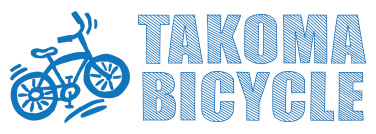
Fat Biking for Fun Winter Fitness
Fat biking might provide that needed fun factor you need to get you out and riding in all conditions. Fat bikes are equipped with wide tires, between 4” and 5” and certainly make an impression. Most cyclists ride them in snowy conditions or sand; they run at low tire pressure and float on surfaces where a normal mountain bike, ’cross, or road tire would sink.
Fat for Fitness
Staying fit in the winter is hard, but fat bikes make outdoor exercise not only possible, but also fun. In addition, they provide tough workouts. On a fat bike, you can burn up to 1,500 calories an hour in soft conditions—seriously. But you’ll also recover faster than if you went for an hour-long run. Since it's a non-weight-bearing activity, you'll have a faster recovery while still using balance and core strength. You may find that you love the stability and suspension on a fat bike so much you want to ride it all year long.
Float on Low
How well your bike rolls through the sand or snow relates directly to your PSI. And finding the perfect PSI is all about experimentation. But with fat bikes, you’ll be experimenting at the low end of what’s possible, contributing to that awesome floating feeling. For snow the general range is between 5 to 8psi. Wider tires in less packed conditions generally run to the low end. For general trail use, riders run between 8 to 12psi.
Built for Adventure - Not Just Snow
Fat bikes aren't just for the snow, but they're always for adventure. When you hop aboard a fat bike, there’s no question that you’re out for play. They inspire adventure. Where the road and trails end, the fat bike comes in. Fat bikes have always been best where they are fastest—where there’s no trail. The fat bike is for that terrain that can’t be ridden on any other kind of bike; it’s for confidence and undauntedness; it’s for the realization of the absolute limit of what bikes can do off road.
Will Demand some Gear
When you’re spending time in freezing weather, you need to layer creatively. You can wear two pairs of gloves, booties over cycling shoes, a bike helmet with an enduro strap to hold goggles, buffs on your ears and around your neck. Winter boots and flat pedals work great if you’re not racing. So do insulated winter cycling shoes. The key to fat bike comfort is warm head, feet, and hands. If you focus on these contact points and you’ll be ready for miles of riding.
Info taken from bicycling.com.


